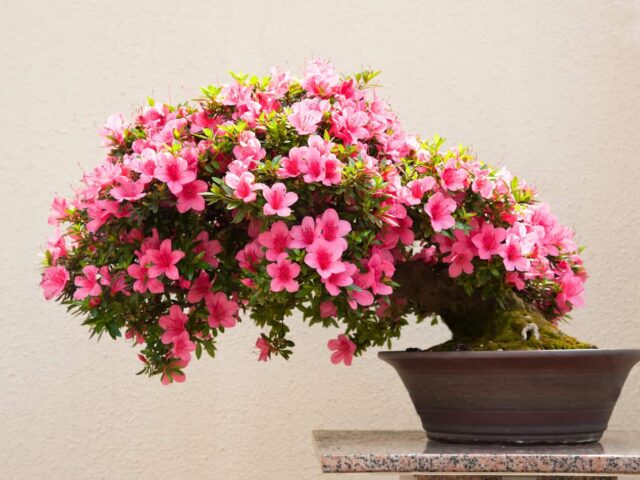Many people want to know, “Can juniper bonsai survive the winter?” Well, yes it can, but only if you are careful. The colder the climate, the longer it should be in dormancy during the winter.
But there are artificial measures you can take to extend the period of winter dormancy. This article discusses these methods and offers suggestions for caring for your juniper.
Insects
Among the most common types of insects that infest juniper bonsai are aphids. Aphids, which are also called greenflies, feed on the sap produced by plants and live on the leaves and stems.
Aphids are small, black-and-white insects that are easy to spot on the leaves and stems of the plant. Aphids are also easy to identify by sight. You can spot aphid infestation by looking for beetles and ants that nest on plants.
When you see signs that your juniper bonsai is being attacked by a fungus, it’s important to act quickly. If you notice that a branch of your juniper bonsai has a trashy coating, you have probably come home to an infestation of juniper mites.
You should check your juniper for signs of the infestation, as these insects usually appear before symptoms of the disease show up.
Insects on juniper are a concern, and they can be controlled by watering more frequently. Juniper trees need regular watering, and it’s vital that you avoid waterlogged soil.
A small amount of dryness between watering sessions is beneficial. Juniper bonsai soil mixes are specially formulated for Juniper trees.
They contain a mix of fine-pit-and-gravel, Japanese clay granulate, and organic potting compost. You can purchase commercial bonsai soil mixes at specialty Bonsai retailers.
Spider mites are another common insect that can infest your bonsai. These tiny creatures are microscopic but are difficult to detect. Their eggs are amber to clear.
Spider mites can cause browning and death of leaves. A good way to spot spider mites on juniper bonsai is to flick the leaves with your finger.
Insects that infest your tree can be difficult to identify, but are easy to kill if you catch them early.
Diseases
There are several common diseases that affect juniper bonsai. These include phomopsis, botryosphaeria canker, and kabatina. Botryosphaeria causes the death of branches and leaves and weakens the tree.
Treatment for canker infections consists of pruning out infected areas and applying wound paste. This disease is also known as “peppery mildew,” and it is a fungus that thrives in damp conditions.
To identify if your juniper bonsai is suffering from any of these diseases, you must lift the tree and examine the roots. Healthy roots are firm and white. Damaged roots will appear mushy or discolored.
The causes of root rot vary, but they are usually due to overwatering. When you overwater your juniper, the roots will begin to rot.
As the foliage returns to its normal green color in the spring, it is important to repot juniper bonsai. The proper time to do this is early spring when the foliage will turn green. Springtime in the northern hemisphere is usually the perfect time to repotted juniper bonsai.
When repotting your juniper bonsai, do not remove the entire original soil; leave a layer of older soil beneath the trunk.
Several diseases affect juniper bonsai, including the following: Phomopsis blight (Phomopsis), Phytophthora lateralis, and fungus-like microorganisms, which attack immature shoot tips.
If you notice these diseases on your juniper, it’s a good time to apply a fungicide.
Temperatures
The best temperatures for juniper bonsai during winter depending on the climate you live in. Warm days and freezing nights are bad for the plant. Its newly stirred buds and roots can become damaged when exposed to cold weather.
If possible, move the bonsai to an unheated area. You can even use snowballs to moisten the roots. Despite their cold tolerance, junipers need low temperatures and protection from extreme temperatures.
The ideal temperatures for juniper bonsai during winter are between 50 and 105 degrees Fahrenheit. In this temperature range, the tree will grow massively due to increased photosynthesis and food availability.
However, you need to be careful not to overwater it. You should also watch for dryness, which can cause dropped leaves and rusty leaves. These symptoms of cold weather are easily recognized by their appearance.
As mentioned before, the proper temperature for juniper bonsai during winter depends on the climate where you live. In a warm climate, junipers will not suffer from the cold, but in a cold climate, they will.
It is essential to protect juniper bonsai from freezing to avoid it from losing new growth. You can also consider leaving the tree in a protected spot and covering it to protect it from the cold.
The temperatures for juniper bonsai during winter vary from climate to climate, but you should try to maintain temperatures at 10 degrees Fahrenheit. In a colder climate, temperatures can reach up to 90 degrees, although you shouldn’t keep it outside if the temperature gets higher than that.
However, temperatures above 100 degrees Fahrenheit can kill the tree. This is why temperatures below 10 degrees Fahrenheit are the ideal temperatures for juniper bonsai in winter.
Proper care
The first step in proper care for juniper bonsais is to monitor the soil moisture. Juniper trees don’t need excessive watering, but they will benefit from moderate watering.
Use a chopstick or finger to check the moisture on a daily basis. Too much moisture can be harmful to the roots of juniper plants. To control the amount of water that comes out, you can use a spray bottle.
The proper care for juniper bonsais during the winter months starts with keeping the plant outdoors. Because juniper trees cannot survive indoors, they should be protected from freezing temperatures.
During frosty periods, the foliage turns purplish brown. This is the plant’s internal frost protection mechanism. In the spring, the foliage will turn green once again.
If you cannot keep the bonsai outside, consider relocating it to an indoor location that is protected from cold. Juniper bonsai can thrive in a variety of conditions, and winter care for them can vary widely.
If the bonsai was grown in an indoor environment before being gifted, it may not need to go through a dormant period.
While the tree can tolerate aggressive pruning, it should not be exposed to excessive amounts of dryness. It is best to prune juniper bonsai in early spring or summer so that no bare parts remain.
After pruning, the cutting should be a few inches long and placed in a container that drains well. The soil should also be pre-moistened.
Storage
To help your Juniper bonsai survive the cold season, be sure to bring it indoors during the summer months. It will not go into dormancy in the winter months, but you must protect it from the cold.
It should be brought inside for the warmer months and be moved back outdoors in the fall. A good choice is a cold-climate juniper. Here are some tips for caring for your Juniper during the winter season.
The first thing you should do is check the climate in which your Juniper is grown. A warm-climate juniper may not need winter dormancy. On the other hand, in a cold climate juniper may be susceptible to cold temperatures.
You may also want to consider the type of bonsai you have. Juniper bonsai that have been growing in an indoor environment before you bought it may not have survived the winter.
Another tip for preventing damage to your Juniper bonsai is to water it every few days. Once or twice a week is sufficient. If the weather does not cooperate, you can bring your Juniper indoors to prevent damage.
If you’re worried about the cold, it may develop diseases and pests. But don’t worry – you can still bring it indoors for the winter.
A juniper bonsai has a great ability to produce deadwood. During the winter, it goes into dormancy, allowing the deadwood within the broken branches to dry out and die.
By splitting off large chunks of deadwood, you’ll be able to reach the living flexible parts of the tree. The deadwood is a good resource for your juniper.



